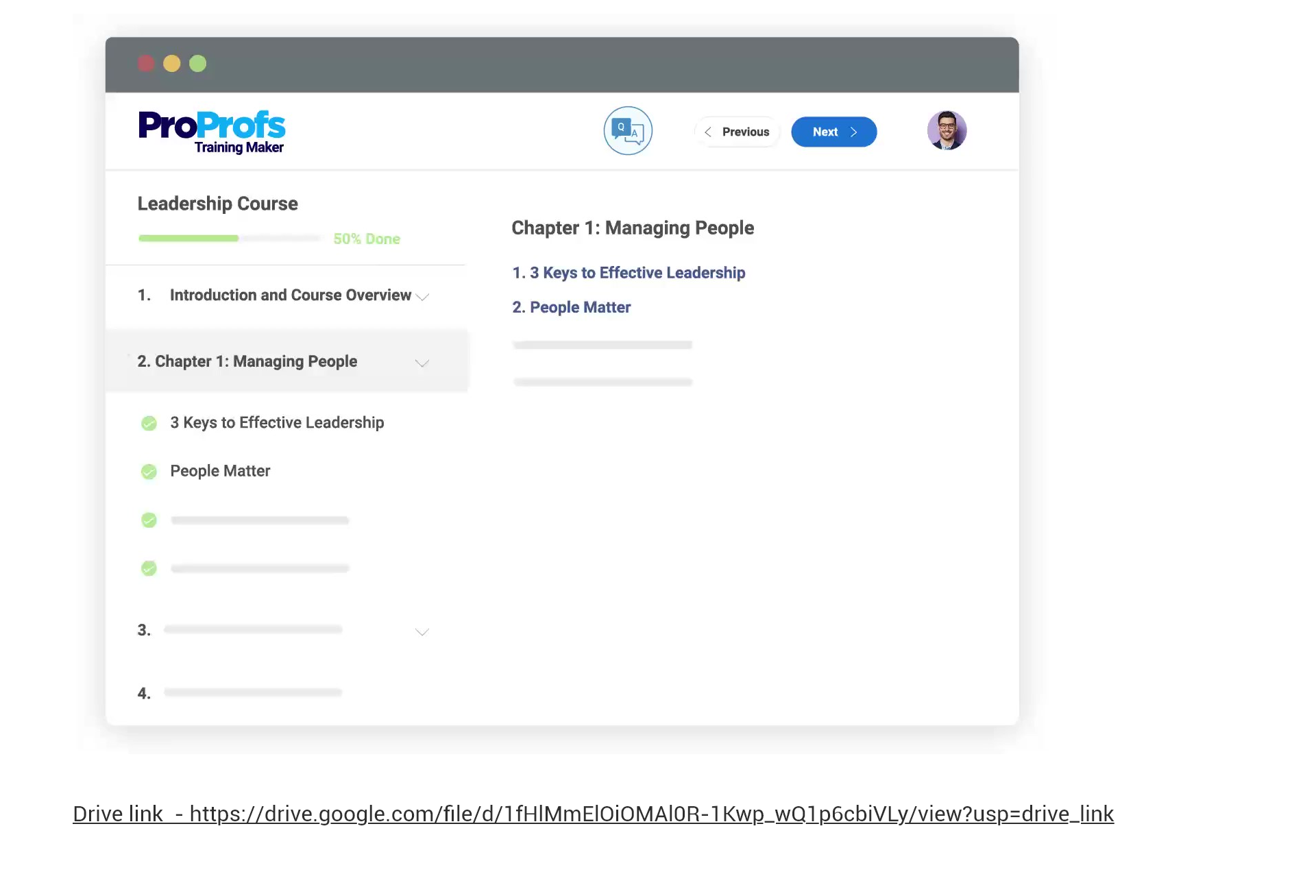Managing employees in multiple locations effectively can be challenging at times.
Being in the training industry for years, I’ve seen many organizations experiencing communication gaps, lack of trust, and confusion in task delegation while working with employees across different sites.
Fortunately, you can easily overcome these challenges.
Here are some tips and strategies to tackle them head-on.
How to Manage Employees in Multiple Sites
If you’ve been wondering how to manage multiple departments, especially when your employees are scattered across different locations, these best practices can help you.
My organization has implemented these strategies in the past and trust me, we have got some amazing results!
1. Ensure Clear Communication
Effective communication is the cornerstone of any successful team, and it’s even more crucial when you’re dealing with distributed team members. Open and frequent communication is essential to keep everyone on the same page, avoid misunderstandings, and build trust.
Here are some communication training courses you can try.

Use a variety of communication channels, such as email, phone, video calls, instant messaging, and project management platforms, to ensure that everyone has access to the information they need.
I also encourage them to communicate with each other and share their ideas, feedback, and challenges.
Wondering how?
I suggest you try ProProfs Collaborate, a questions and answers platform that can help you grow your team’s knowledge and learning.

It enables you to create a learning-focused community where you can start conversations, share information, and centralize knowledge and answers.
2. Set Clear Expectations
Managing your employees across multiple locations becomes effective when you set clear expectations.
When managing remote teams, it’s imperative to establish clear expectations from the outset. Clearly define the goals, roles, responsibilities, and timelines for each project or task.
Provide team members with detailed instructions and ensure they understand their individual contributions to the overall objectives.
Regular check-ins and progress reports help monitor progress, identify potential roadblocks, and provide timely feedback.
Here’s how you can set SMART goals for your employees:
3. Standardize Office Processes

Working across multiple locations can pose some challenges. People might face challenges in communicating and syncing their efforts, making it important to find effective ways to collaborate and keep everyone on the same page for successful teamwork.
That is why I find the standardization of the team’s processes and procedures, such as reporting, documentation, and quality assurance, at my organization particularly helpful.
I saw how it helped improve efficiency, reduce errors, and maintain uniformity of work.
ProProfs Training Maker has helped us a lot with this! It can also help you in organizing your training in multiple locations.
It’s a cloud-based LMS that empowers users to build and deliver consistent training programs, effectively, minimizing errors and ensuring everyone follows the same procedures.
The platform supports documentation and videos for SOP training. It provides robust tracking tools, customizable branding options, and stringent security controls, leading to improved efficiency and a more uniform, high-quality workforce.
Watch: What is a Cloud-Based Learning Management System?
4. Use Technology

In today’s globalized world, it’s becoming increasingly common for organizations to spread employees across multiple locations.
While this can offer advantages like diversifying the talent pool and accessing new markets, it also presents unique challenges, especially regarding communication, collaboration, and productivity.
Fortunately, modern technology can help overcome these challenges and effectively manage a geographically dispersed team.
Here are some technologies my teams and I use to keep connected and maintain the workflow.
- For Communication, I use Microsoft Teams. This platform facilitates real-time communication and collaboration through instant messaging, video conferencing, file sharing, and more. It fosters a dynamic and interactive work environment, regardless of location.
As I said earlier, I also use ProProfs Collaborate to promote knowledge sharing and discussion.
- For project management, I have tried both these tools:
ProProfs Project: This tool helps teams manage and track projects efficiently. It allows assigning tasks, setting deadlines, monitoring progress, and collaborating on documents and files.
Asana: This tool provides a visual overview of projects and tasks, allowing clear communication, efficient collaboration, and improved team coordination.
- ProProfs Training Maker has helped me a lot with knowledge sharing. It provides a centralized repository for training materials, online courses, and other resources. It enables team members to access information and learn new skills at their own pace, regardless of location or time zone.
- When it comes to performance management, I also rely on ProProfs Training Maker. This LMS also offers features for tracking training progress, evaluating learning outcomes, and identifying areas for improvement. So, it becomes easy for me to make informed decisions to boost productivity and achieve goals.
Watch: How to Analyze Training Course & Quiz Results?
Additional Considerations:
- Use services like OneDrive and Google Drive for secure storage and seamless collaboration on documents, presentations, and other files across various locations.
- Tools like Toggl and Harvest help team members track their time on tasks and projects.
- Implementing cloud-based security solutions and employing encryption and access control tools ensures data protection and compliance with regulations.
5. Conduct Regular Check-Ins

One of the biggest hurdles in managing employees across multiple sites is fostering a shared purpose and connection.
To address this, you may conduct regular check-ins with your team members, both individually and as a group. I’ve seen many organizations, including mine, do it, whether as a part of their training programs or outside them.
These check-ins help monitor the work progress, resolve issues or concerns, provide feedback and recognition, and offer support and guidance.
For example, regular check-ins help me understand my strengths and weaknesses and build rapport and trust. Also, it’s beneficial for boosting my morale, satisfaction, and loyalty.
6. Develop Cultural Sensitivity

With employees worldwide, it’s easy for many companies to get caught up in misunderstandings and misinterpretations. But that’s where cultural sensitivity comes in!
When you’re culturally sensitive, you can:
- Understand and appreciate the diverse perspectives, values, and communication styles of your team members.
- Reduce miscommunication by avoiding assumptions and taking the time to clarify your expectations.
- Foster a more inclusive work environment where everyone feels comfortable expressing themselves. This diversity of thought leads to better problem-solving and innovation.
So, how do you become more culturally sensitive?
Here are a few things you can do (I have tried them as well).
- Train your employees on diversity, equity, and inclusion so they know how to treat and respect each other.
Watch: What Is Diversity, Equity and Inclusion?
- Be open-minded and curious about different cultures. Ask questions, read books and articles, and watch documentaries to learn more about the different cultural backgrounds.
- Be aware of your own cultural biases. We all have them, but it’s important to be conscious of them so you can avoid making assumptions or judgments.
- Be respectful in your communication. Use inclusive language, avoid offensive stereotypes, and be mindful of nonverbal cues.
- Ask for feedback from your team members. Let them know that you’re open to learning and feedback on how you can better understand and appreciate their cultural perspectives.
By being culturally sensitive, you can create a more positive and productive work environment for everyone on your team, no matter where they’re from!
7. Implement Training & Development
I firmly believe that training for staff across multiple locations can be a challenge, but only when you’re not fully invested in them.
Whether your employees are working remotely or on-site, every one of them deserves the opportunity to learn and grow in their professional journey.
To achieve this, you can offer diverse learning opportunities and resources. From online courses and webinars to podcasts, books, and even leadership training programs, your teams should have access to a wealth of knowledge at their fingertips.
This is what I’ve witnessed happening in my organization – training at the department level or company-wide.
Through this support, employees can strengthen their existing skills, acquire new ones, and stay up-to-date with industry trends.
With ProProfs Training Maker, it becomes easy to train your remote workforce. You start by creating a virtual classroom and adding users. Create user groups based on their roles, departments, or locations.
You can then assign courses to these users or groups. You can track each user’s progress, assess their performance through tests, and provide feedback.
This ensures a comprehensive and effective training experience for your remote employees.
Watch: How to Set up Your Virtual Classroom in 5 Minutes?
8. Recognize Achievements

Recognition doesn’t always have to be grand gestures. Even small acknowledgments can have a big impact. It’s all about making employees feel seen and appreciated for their hard work and dedication.
Recognizing the achievements of your remote employees can be done in several ways:
- Virtual Recognition: Use digital platforms to acknowledge their accomplishments. This could be through shout-outs during virtual meetings, posts on company social media, or recognition in company newsletters.
- Personalized Messages: Send personalized emails or messages acknowledging their hard work. A personal touch can make the recognition more meaningful.
- Awards and Certificates: Provide digital certificates or awards that employees can display on their social media profiles or professional networks.
- Gifts or Bonuses: Depending on your company policy, tangible rewards like bonuses, gift cards, or other perks can be a great way to recognize achievements.
Remember, the key is to make the recognition timely, specific, and aligned with your company values. This will ensure it is meaningful and motivating for your employees.
9. Provide Flexibility in Work Schedules

While working across diverse locations can offer undeniable benefits, it can also present its challenges.
Time zone differences, daily commuting, and personal obligations might impact your team’s workflow.
However, by taking a proactive approach to flexibility, you can empower your team and overcome these hurdles.
Here’s how:
- Embrace flexible work hours
Offer options like flexible hours or work-from-home setups, allowing your team to manage their time effectively. This can significantly improve their work-life balance, increasing satisfaction and reducing stress. - Foster autonomy and trust
Instead of micromanaging, empower your team to take ownership of their tasks and set their own schedules. This creates a sense of trust and responsibility, motivating them to perform at their best. - Respect work-life balance
Avoid overloading your team with unrealistic expectations or unreasonable demands. Respect their time outside of work, allowing them to recharge and maintain a healthy balance between their professional and personal lives.
10. Organize Virtual Social Events

Organize virtual social events for your teams, such as online games, quizzes, trivia, and karaoke. This is a great way for managing your employees across multiple locations effectively.
Get-togethers may not be feasible or practical for some teams, especially when working across different locations and countries.
However, I think it is still a valuable tip to consider, as it can positively impact the team’s relationship, collaboration, and work experience.
It does not have to be a frequent or expensive but rather a rare and special occasion that can create memorable and meaningful moments for the team.
You can use platforms and tools, such as Zoom, Skype, and Kahoot, to facilitate these virtual social events. You can also invite your team to share their hobbies, interests, or talents.
These events can help you have some fun, socialize with your team, and create a sense of belonging and camaraderie among them.
Easily Manage Your Employees Anywhere
I agree that managing employees across multiple locations effectively is not easy, but it is not impossible either.
Following these tips, you can overcome the common challenges and create a connected, engaged, productive, and happy workforce.
You can also leverage the benefits of having a diverse and talented team catering to different markets and customers.
Remember, the key to success is clear communication, consistent processes, smart technology, regular feedback, cultural sensitivity, training and development, and recognition.
With these strategies, you can make your employees feel valued and connected, no matter where they are located.
 Tips
Tips
We’d love to hear your tips & suggestions on this article!
Get Free Employee Training Software — All Features, Forever.
We've helped 567 companies train 200,000+ employees. Create courses in under a minute with our AI LMS or use 200+ ready-made courses on compliance, harassment, DEI, onboarding, and more!

 We'd love your feedback!
We'd love your feedback! Thanks for your feedback!
Thanks for your feedback!







